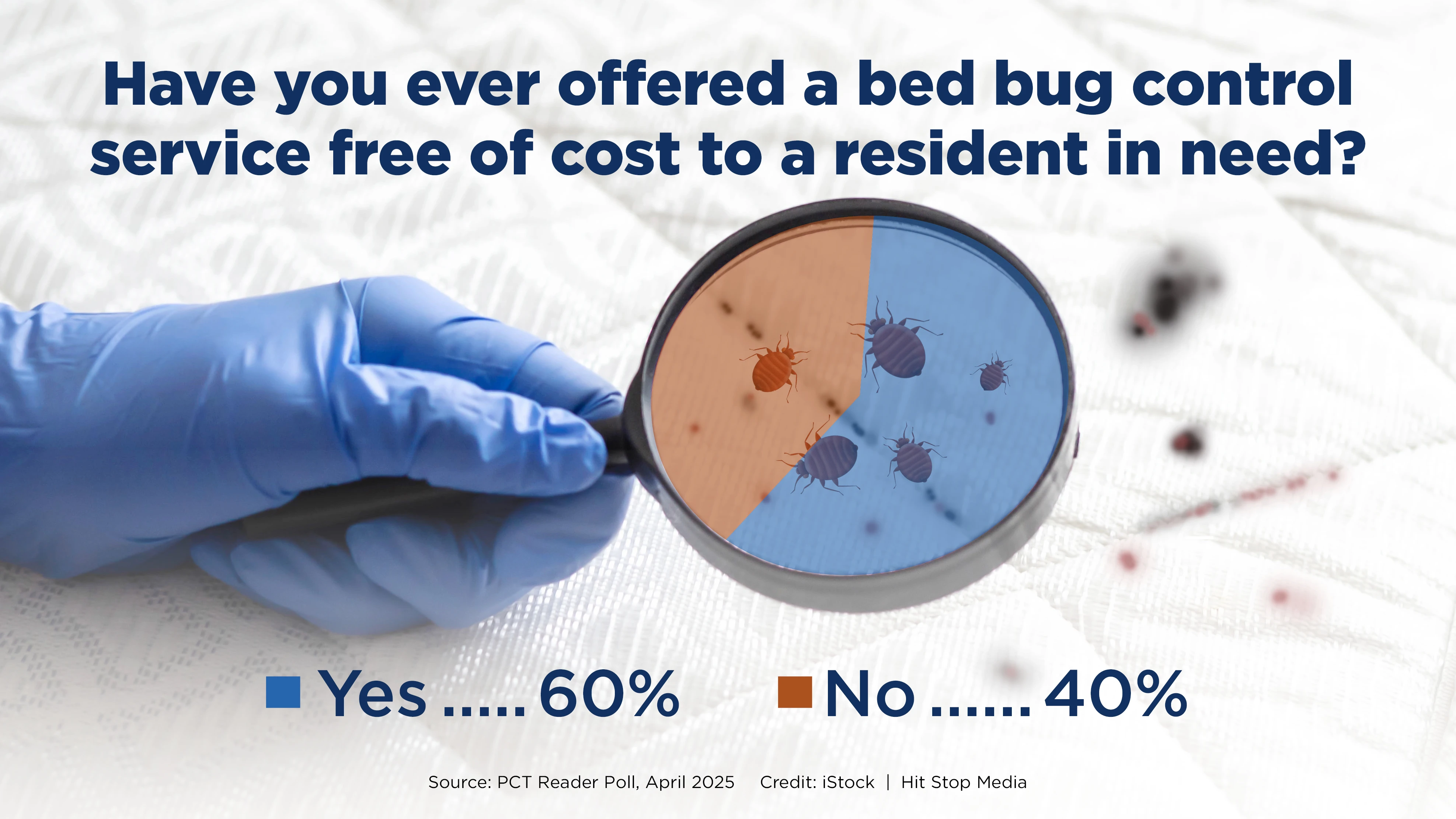As the warmer weather of summer arrives this year, the season also brings with it night flying insects that are attracted to a facility’s lights. To ensure your customers’ facilities aren’t a magnet to swarms of these pests, here are nine light management tips pest management professionals can implement around their customers’ facilities to make them less of a nighttime attraction.
1. Find a new night light. Any kind of white light — including florescent, incandescent, mercury, vapor or halogen — should not be used within 50 feet of a building. The best way to light the grounds around a facility is by mounting high-pressure sodium vapor lights, whose light is much less attractive to insects, on standalone poles. If you need to use floodlights to illuminate a sign, make sure the sign isn’t mounted on the building and is located as far away from the building as possible. Many people are drawn to using mercury vapor lights because they are less expensive than sodium vapor lights, but sodium vapor lights are actually cheaper to run (you will reach a breakeven point on the cost).
2. Think safety first. For safety and security reasons, the exception to not mounting lights on buildings is in high-traffic entrances, especially ones that have steps. In these areas the best solution is to mount a sodium vapor light on the building on the hinged side of the door so that it will shine on the area where people walk.
3. Hide the white light. Keep white light from escaping from inside the building. Since all white light attracts bugs, quite often doors need to be sealed or repaired and weather seals added to stop the light from coming out. Also, the boots on dock doors should be repaired, if necessary, and any holes in the walls need to be sealed.
4. Screen callers. All windows should be properly screened if they can be opened. Vents and air intakes need to be screened and/or filtered, and dock doors need proper screens if they have to remain open for ventilation purposes or if light is visible through them at night.
5. Install vestibules. In high-traffic areas, such as main entrances, it is best if you have a vestibule so people, and insects, don’t enter directly into lighted buildings at night — or anytime.
6. Tint entrance windows. By tinting the windows on doors, much less light shines through the door so it isn’t as attractive to bugs, but you can still see the people inside.
7. Turn off the white light. Since white light is like a searchlight to bugs, any area where there is an opening to the outside, whether it is screened or not, should have sodium vapor lights for the first two rows of interior lights.
8. Use an air curtain. Air curtains used on “people” doors and dock doors can help keep insects out by blowing the air to the outside whenever the door is opened. They should be wired to come on automatically whenever the door is opened. These will not work for buildings or areas of buildings with negative air pressure.
9. Use interior light traps. A proper interior insect light trap program designed by a pest management professional should be used to help capture flying insects that manage to get into the facility. Placement of these light traps is critical to their effectiveness.
The author is director of technical services, Dodson Bros. Exterminating, Lynchburg, Va.

Explore the June 2007 Issue
Check out more from this issue and find your next story to read.
Latest from Pest Control Technology
- Cockroach Control and Asthma
- Target Specialty Products Expands Sales Leadership Team
- FORSHAW Announces Julie Fogg as Core Account Manager in Georgia, Tennessee
- Envu Introduces Two New Innovations to its Pest Management Portfolio
- Gov. Brian Kemp Proclaimed April as Pest Control Month
- Los Angeles Ranks No. 1 on Terminix's Annual List of Top Mosquito Cities
- Kwik Kill Pest Control's Neerland on PWIPM Involvement, Second-Generation PCO
- NPMA Announces Unlimited Job Postings for Members





